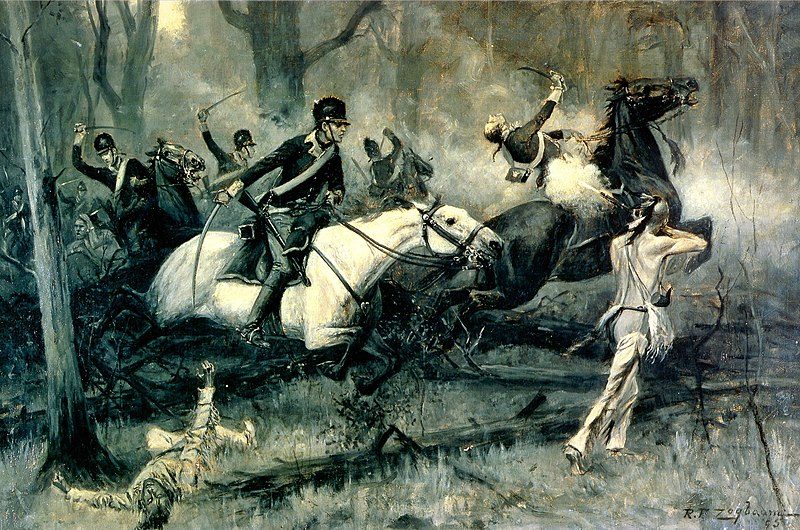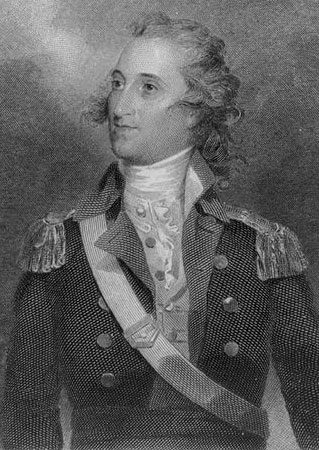After leading his country to victory in the American Revolutionary War, George Washington was unanimously selected the First President of the United States. His tenure began on April 30, 1789 and ended on March 4, 1797. He served for two four year terms after which he declined to run for a third term of office, thus setting a precedent of a two-term limit which ultimately became a law in 1951. Here are the successes and failures of his presidency.
Table Of Contents
The Key Questions
Along with Abraham Lincoln and Franklin D. Roosevelt, George Washington is usually ranked among the top three presidents by historians and scholars.
His greatest achievement was probably keeping the United States out of the French Revolutionary War in Europe despite a pro-French sentiment in the nation. He thus set a key precedent of America being neutral in foreign quarrels.
His domestic policy was focused on establishing the framework of the new nation. Among other things, the Departments of State, War and Treasury as well as the office of Attorney General were created.
The foreign policy of his presidency was dominated by the French Revolution. George Washington kept America neutral as he believed that the young nation could not get involved in foreign matters just after they had themselves fought the American Revolutionary War.
George Washington Presidency Timeline

S1 – Domestic Policy Successes
#1 Laying the Foundations of the New Nation
As United States was a fledgling nation when George Washington took over as President, he went on to establish several precedents. In fact, he wrote to James Madison: “As the first of everything in our situation will serve to establish a precedent, it is devoutly wished on my part, that these precedents may be fixed on true principles.”

The Departments of State, War and Treasury as well as the office of Attorney General were established. Each was headed by a presidential advisor forming the four man cabinet of George Washington.
#2 Winning the Northwest Indian War
In 1785, several Native American tribes formed an alliance to jointly deal with the United States. President Washington first instructed Brigadier General Josiah Harmar to deal with the threat posed by this Confederacy. However, Harmer was defeated in October 1790. The following year, another force under Major General Arthur St. Clair was routed by the Native Americans in the Battle of Wabash River. 632 American soldiers were killed or captured while 264 were wounded.
Washington then turned to Revolutionary War veteran General “Mad” Anthony Wayne. Wayne spent months training his troops to fight using forest warfare in the style of the Native Americans. He then led U.S. to decisive victory at the Battle of Fallen Timbers on August 20, 1794 bringing an end to the Northwest Indian War.

The Treaty of Greenville was signed in 1795 which opened parts to American settlement of what would become the states of Ohio, Michigan, Indiana, Illinois and Wisconsin.
#3 Suppressing the Whiskey Rebellion
An excise tax on domestically distilled spirits, known as the “Whiskey Act”, became law on March 3, 1791. This taxation was violently opposed in western Pennsylvania with attacks on tax collectors and the formation of several well-armed resistance movements. The rebellion became known as the Whiskey Rebellion of 1794.

George Washington summoned the militias of Pennsylvania, Virginia and several other states. He then personally took command of the 12,950 men in the build up to encourage them. The army marched into Western Pennsylvania in October 1794. The rebellion collapsed quickly with little violence and the resistance movements disbanded.
In crushing the Whiskey Rebellion, Washington set a precedent that dissatisfied minorities can protest peacefully but cannot take arms against even the most unpopular official acts.
S2 – Domestic Policy Failures
#1 The Fugitive Slave Act of 1793
During the Washington presidency, the Fugitive Slave Act of 1793 was passed which required all states, including those that forbid slavery, to forcibly return slaves who had escaped from other states to their original owners. It is to be noted that Washington was himself a slave owner. However, he is the only one of the nine presidents who owned slaves, to free all his slaves; in his 1799 will.
#2 The Formation of the Two Party System
George Washington was against the two party system. In fact, the Founding Fathers entirely omitted political parties from the new nation’s Constitution. However, despite his efforts, two competing factions formed within Congress during his presidency; one led by Alexander Hamilton, secretary of the treasury; and the other led by Thomas Jefferson, the secretary of state.

This ultimately led to the nation’s first two political parties. Though there are alternate views on America’s two party system, it may be seen as a failure of Washington’s domestic policy. This is due to the fact at that time, the founding fathers wanted to avoid parties, including Washington.
S3 – Foreign Policy Successes
#1 Keeping America Neutral in the French Revolutionary War
The French Revolution began in 1789 and, in 1792, war broke out in Europe between France and several European powers including Great Britain. Although there was pro-French sentiment in America, George Washington believed that the United States was too weak and unstable to fight another war. He thus issued the Proclamation of Neutrality on April 22, 1793 that declared United States neutral in the war in Europe.

The Proclamation was formalized into law by the Neutrality Act of 1794, which made it illegal for an American citizen to wage war against any country at peace with the United States. The Neutrality Act has been updated but remains in force till date. George Washington thus kept the young nation out of war and set a key precedent of America being neutral in foreign quarrels.
#2 Pinckney’s Treaty
There was discord between America and Spain regarding the western and southern borders of the United States. On October 27, 1795, “Treaty of Friendship, Limits, and Navigation Between Spain and the United States” was signed between the two nations. Thomas Pinckney negotiated the treaty for the United States and Don Manuel de Godoy represented Spain.

Known as the Pinckney’s Treaty, it was an important diplomatic success for the United States. It resolved territorial disputes between the two nations. Moreover, it granted the American ships free navigation of the Mississippi River and duty-free transport through the port of New Orleans, then under Spanish control.
#3 Naval Act of 1794
Before United States became independent, piracy was not an issue as the Royal Navy protected American vessels. With the disbanding of the Continental Navy post independence, American ships had no protection against intervention from foreign powers. By 1793, the loss of American ships to the Algerian pirates had become a serious issue.

To counter it, President Washington asked Congress to approve a bill authorizing the creation of a naval force to protect American merchant vessels. Naval Act of 1794 was signed by him on March 27, 1794. It authorized the creation of a fleet of six ships which eventually became the first ships of the present-day United States Navy.
S4 – Foreign Policy Failures
#1 Jay’s Treaty
After the Revolution, United States and Britain had a number of unresolved issues which were a cause of fiction between the two nations. While British exports flooded the American markets, American exports were blocked by British trade restrictions and tariffs. The British still occupied northern forts which they had agreed to vacate in the Treaty of Paris (1783). The last major issue was Britain’s impressments of American sailors and seizure of naval and military supplies.
As the French Revolution broke out, American politicians became divided into pro-British and pro-French factions. Fearing the repercussions of a war with Britain, Washington sent pro-British Chief Justice John Jay to negotiate with the British Government. This resulted in a treaty between the two nations on November 19, 1794, which became known as the Jay’s Treaty.

This treaty is considered very unfavorable for the United States. It addressed few U.S. interests, and ultimately granted Britain additional rights. Its only gains were surrender of the northwestern posts, which had already been agreed in the Treaty of Paris; and granting U.S. the “most favored nation” status commercially.
All other outstanding issues, including the Canadian-Maine boundary, compensation for pre-revolutionary debts and British seizures of American ships were left unresolved by the Jay’s Treaty. Further, it had negative effects for the remainder of Washington’s term as President. These include the French harassing American ships claiming that U.S. was in alliance with their enemy.
S5 – Major Legislation
- Tariff Act of 1789 – Signed into law by President Washington on July 4, it aimed to solve the pressing issue of how to raise revenue for the federal government. The act levied a 50¢ per ton duty on goods imported by foreign ships and 6¢ per ton on American owned vessels. To enable the federal government to collect these import duties, Congress also passed the Collection Act of 1789. This Act established the United States Customs Service to collect the tax.
- Judiciary Act of 1789 – Signed into law by President Washington on September 24, it established the federal judiciary of the United States. Among other things, it set the number of Supreme Court justices at six: one Chief Justice and five Associate Justices.
- Bill of Rights – Congress approved 12 amendments to the U.S. Constitution on September 25, 1789. 10 of the 12 proposed amendments became ratified by the requisite number of states and became collectively known as the Bill of Rights. It spells out the rights of American citizens in relation to their government. It guarantees civil rights and liberties to the individual; like freedom of speech, press and religion. It sets rules for due process of law and reserves all powers not delegated to the Federal Government to the people or the States.
- Bank Bill of 1791 – Signed it into law on February 25, it established the first Bank of the United States.
- Coinage Act of 1792 – Signed into law on April 2, 1792, it created the United States dollar as the country’s standard unit of money, established the United States Mint, and regulated the coinage of the United States.
- Naval Act of 1794 – Signed into law on March 27, 1794, it authorized the creation of a fleet of six ships which eventually became the first ships of the present-day United States Navy.
Main Sources
S1:-
Knott, Stephen. “George Washington: Domestic Affairs”. Miller Center.
Hickman, Kennedy (March 06, 2018). “Northwest Indian War: Battle of Fallen Timbers”. ThoughtCo.
Norton Smith, Richard (1994). “The Surprising George Washington”. National Archives.
S2:-
“Congress Enacts First Fugitive Slave Law”. History.
E. Ambrose, Stephen (November 2002). “Founding Fathers and Slaveholders”. Smithsonian Magazine.
Pruitt, Sarah (March 7, 2019). “The Founding Fathers Feared Political Factions Would Tear the Nation Apart”. History.
S3:-
McMaster, John Bach (2006). “A History of the People of the United States: From the Revolution to the Civil War”. pp. 539–540.
Knott, Stephen. “George Washington: Foreign Affairs”. Miller Center.
“Neutrality Proclamation, 22 April 1793”. Founders Online. National Archives.
“Formation of the U.S. Navy”. The Mariners’ Museum.
S4:-
“John Jay’s Treaty, 1794–95”. Office of the Historian. U.S. Department of State.
Knott, Stephen. “George Washington: Foreign Affairs”. Miller Center.
S5:-
Miller, John C. (1960). “The Federalists: 1789-1801”. p. 19
Bordewich, Fergus M. (2016). “The First Congress”. pp. 102–103
“The First Bank of the United States”. Office of the Historian. U.S. Department of State.
Nussbaum, Arthur (November 1937). “The Law of the Dollar”. Columbia Law Review.
“The Bill of Rights: What Does it Say?”. National Archives.

